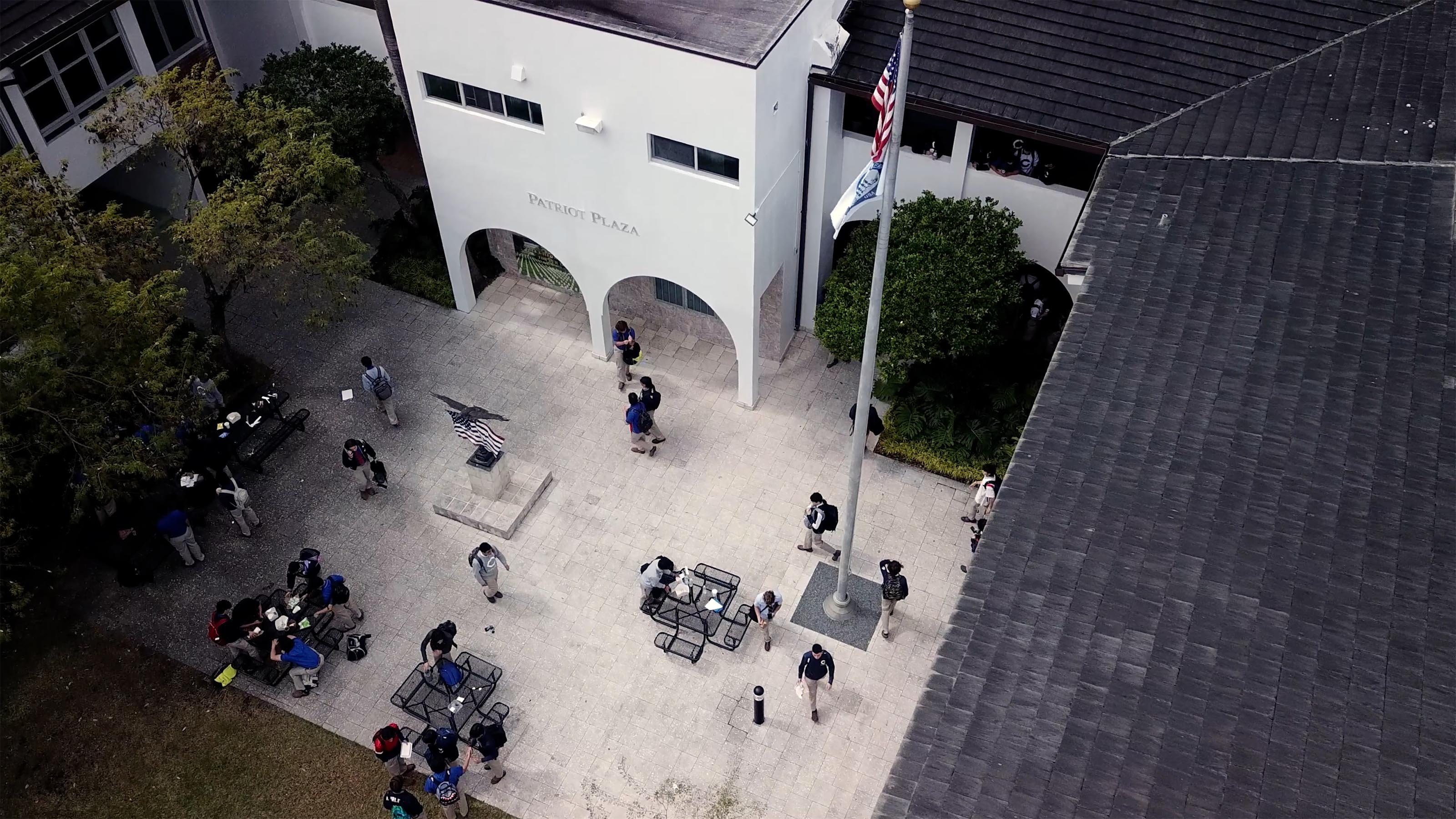Founded in 1958, Christopher Columbus High School (CCHS) in the suburbs of Miami counts a number of Fortune 500 CEOs among its alumni. Renowned for its college preparatory program, football and athletics, and focus on leveraging technology, the private, all-boys Catholic school recently deployed a campus-wide mass notification system to improve communications across the 24-acre property.
[Louisville Muhammad Ali Airport Strives to Be ‘The Greatest’ with AtlasIED]
The CCHS campus connects the facility’s auditorium, classrooms, and indoor gymnasium via a series of breezeways. The need to communicate news and instructions to students, faculty, and visitors—both on a routine basis as well as during emergencies—drove the school to invest in AtlasIED’s IPX Series of IP endpoints with Singlewire's InformaCast mass notification software. United Data Technologies (UDT), a Miramar, FL-based provider of IT, security, and AV solutions, headed up the integration.
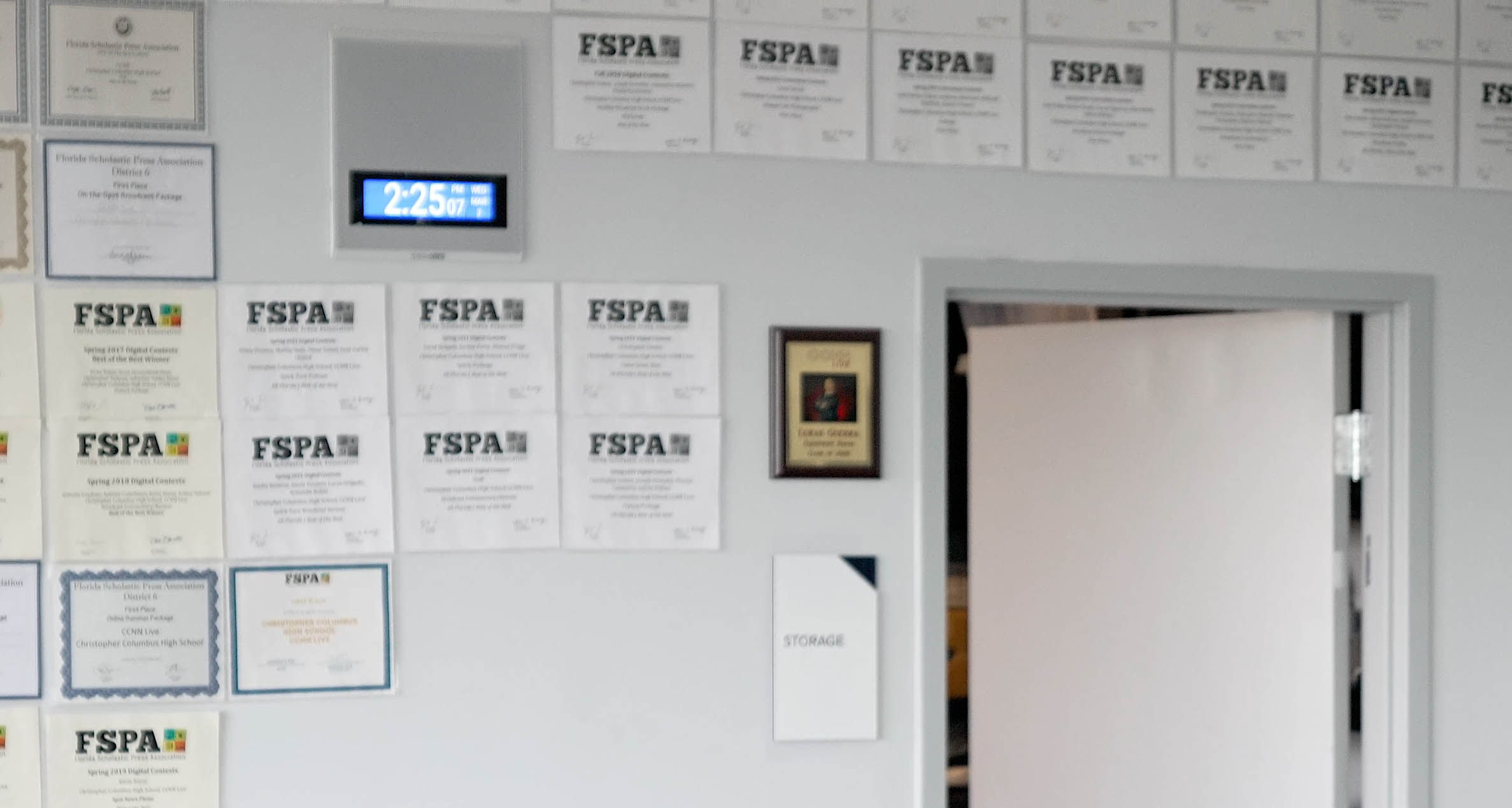
UDT integrated the InformaCast software with 120 AtlasIED IPX speakers and displays positioned in the school’s classrooms. There are also 20 IP horns installed in the facility’s common areas, parking garages, and outdoor lots. The network-ready IP endpoints are PoE-capable, which facilitates system expansion, if required.
Multi-Purpose System
The system is used as an intercom, for daily bell schedules, and for announcements, meditations, and prayers. Delivered directly from an administrator’s phone, content may be live or pre-recorded. With Singlewire’s InformaCast software, the school can send emergency messaging (either via text or audio) to the phones of students, staff, and parents, both on campus and off. It will also alert law enforcement in the event of an emergency.
[Viewpoint: What's Your Professional Mindset?]
“AtlasIED works very nicely with InformaCast, and it works very nicely with [the school’s] Cisco phone system,” said Joe Montesinos, senior account manager at UDT. “It was very easy to integrate all three of them.”
Mass notification is “finally getting the attention it deserves,” Montesinos noted. He points to Senate Bill 70, passed by the Florida Legislature in 2020, which mandates the deployment of mobile panic alert systems that can communicate in real time with emergency response services in all Florida public schools and charters. The bill, known as “Alyssa’s Alert,” is named for Alyssa Alhadeff, who was killed during a mass shooting at Marjory Stoneman Douglas High School in Parkland, FL, in February 2018.

“The InformCast software with the AtlasIED technology allows us [that communication],” Montesinos said. “If there is an active shooter or a fire in the facility, we can control the exits. You can have constant, two-way communication with your classrooms and your teachers [that instructs them to either] evacuate or lock down. All of those things are in an emergency procedures manual, and they execute off of that.”
The ability to deliver emergency alerts to parents who are not on campus is also important, Montesinos said, because it minimizes confusion. For example, a school might go into lockdown mode not because of an emergency on premises, but due to an incident in the surrounding area, such as a holdup at a neighboring shopping center. Informing parents of these details can help to curb panic.
Cameras Fall Short
Jesus Villahermosa, president of Crisis Reality Training, based in University Place, WA, teaches K-12 school districts, higher education institutions, and corporations the protective measures to follow in the event of a mass shooting. He also provides security-related site assessments and consults with architects on how to design safer facilities. He argues that while facilities may rely on camera systems to keep their properties secure, in many cases they aren’t effective.

Jesus Villahermosa, Crisis Reality Training
He cited the mass shooting that took place in May 2022 at Robb Elementary School in Uvalde, TX. “The problem with camera systems is they’re rarely ever monitored in any school in America,” Villahermosa explained. In Uvalde, he said the cameras simply served to film everything the school and the authorities got wrong.
“[There is the shooter] walking in, clearly showing that the argument that the door wasn’t latching correctly to be incorrect," he observed. "The door latch is perfectly fine—you can hear it as clear as day as it shuts behind him. So your camera has just recorded your failures. I don’t know of any time that a camera has saved a life in an active shooting.”
[Barix Gateway Bridges Smartphones and Legacy Public Address Systems]
Villahermosa spent 33 years on the police force in Pierce County, WA, as a deputy sheriff and point man for the S.W.A.T. team. A first responder during a number of active shootings—one was at his son’s high school, which his son thankfully survived—he has spent the last four decades researching mass shootings around the world. Based on his experience, Villahermosa recommends that mass notification technology is the best tool in emergency situations.
“The emergency notification system is the only system that notifies everyone on a campus of the same thing at the same time,” Villahermosa said.
Of course, this is only true if mass notification systems are configured properly and tested regularly. Villahermosa noted most mass notification systems in schools are configured to be heard during classroom time when things are relatively quiet. The same goes for emergency drills, which are “spontaneously” announced, again, during classroom time. “When do most school shootings happen? Ninety percent [of them are] during passing periods,” he said, referring to when students are at their lockers or on their way to the next class.
Herein lies the problem. If the system is set at 70 decibels but the noise during a passing period measures 95 decibels, for example, no one is going to hear the emergency alert properly. “PAs are set at 65 to 70 decibels because we’re expecting you to be quiet,” Villahermosa said. “The bad guy could care less what you’re expecting.”
Back at CCHS, Alex Seage, senior director of technology and innovation, said the school’s new mass notification system has contributed to an improved learning and teaching environment, while increasing safety at the same time. “With such a large campus and students as young as 14 years old, you have to be ready to communicate to them immediately,” he said. “Having this system in place has really helped us communicate and get the word out to keep the campus safe.”
Get the Message Out
Streamlining communications throughout any facility is crucial to keeping things running smoothly and making buildings as safe as possible. Here are some systems to consider.
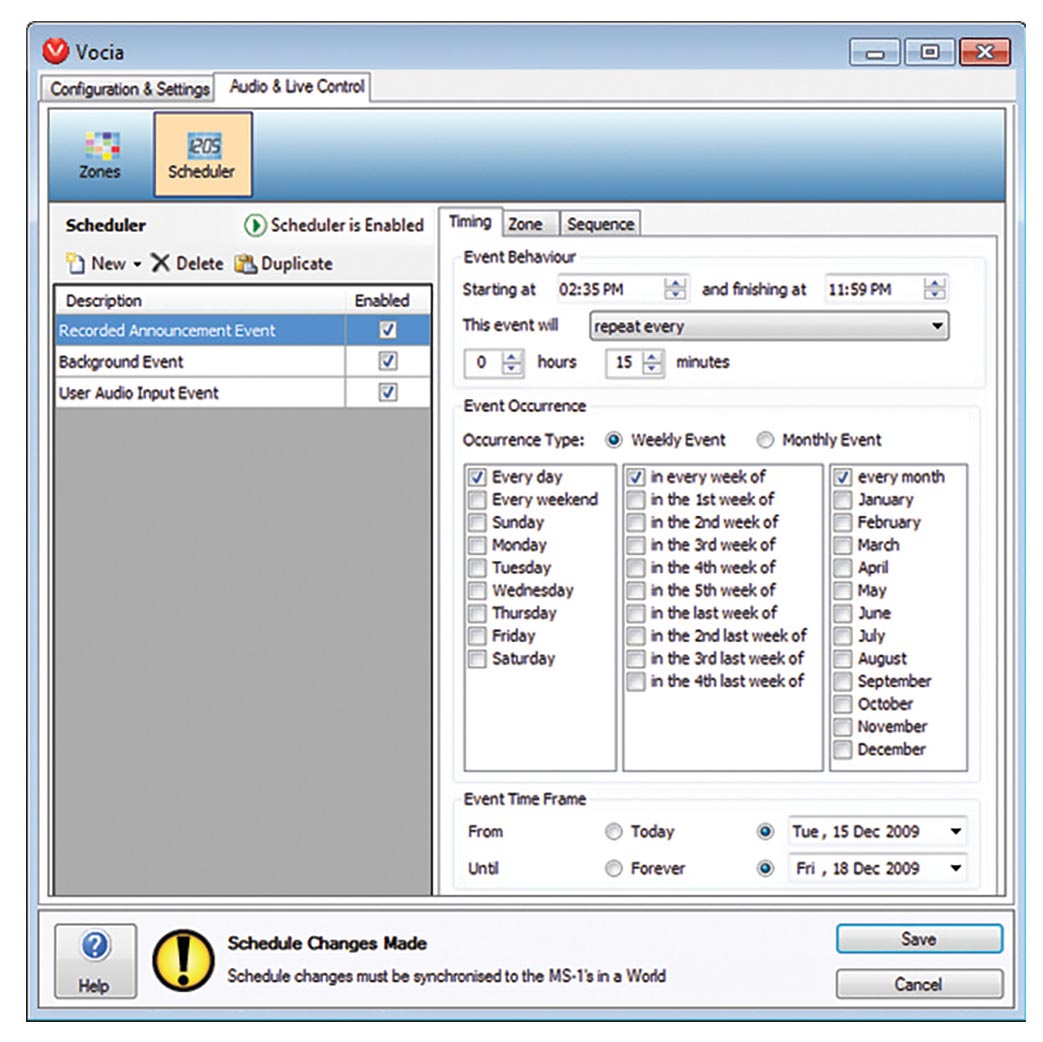
Biamp Vocia
An emergency communications, paging, and background music system, Vocia is a scalable solution based on a distributed, decentralized architecture. It allows for zone-based communications and is suitable for corporate offices, school campuses, airports and transit centers, healthcare facilities, and more.
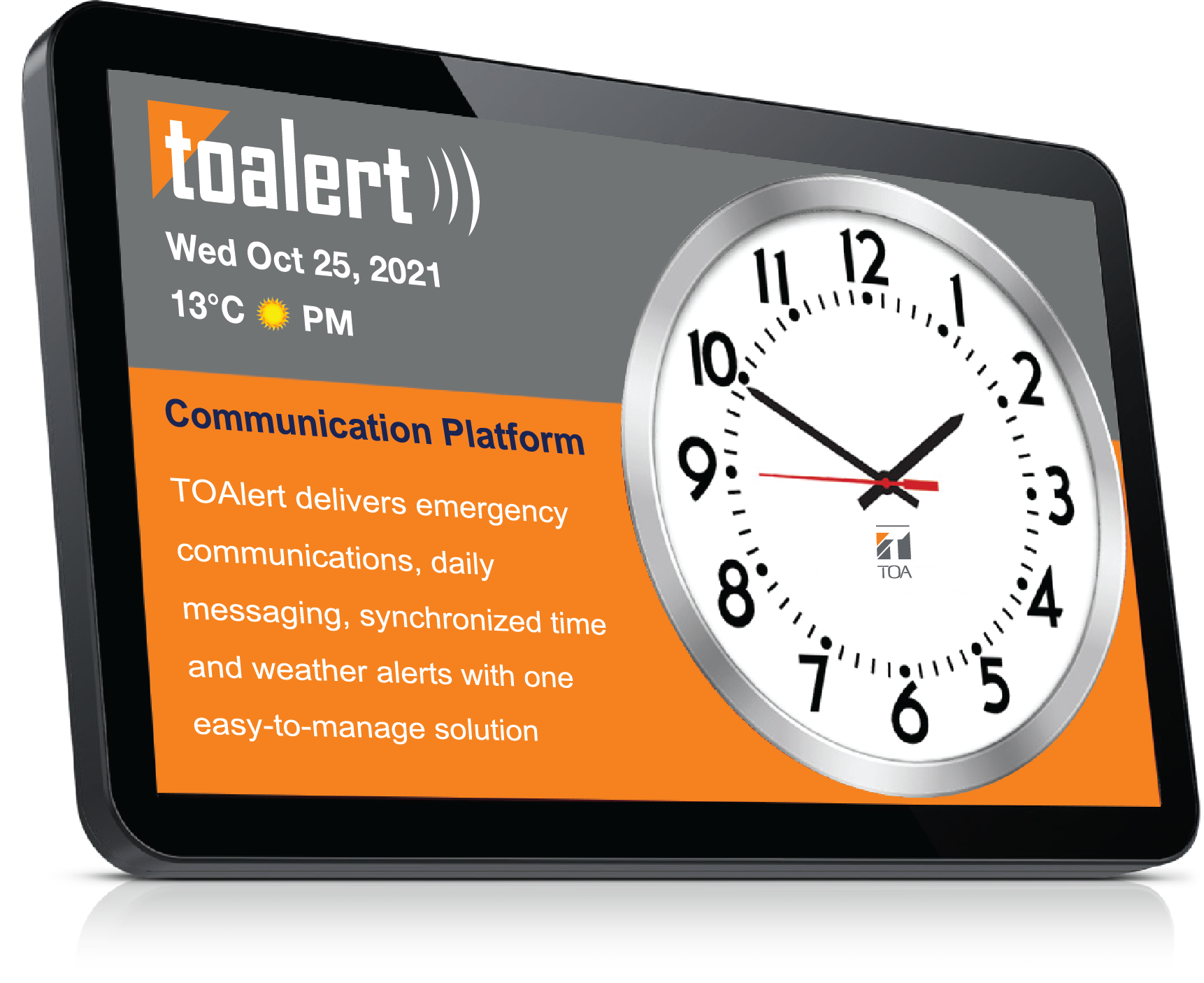
TOA Electronics TOAlert
TOAlert is an EverAlert mass notification platform. The company’s ecosystem of TOAlert products includes a display, smart media player, embedded web server, PoE and Wi-Fi receivers, and a bracket mount. The system is compatible with TOA’s N-8000 intercom and VM-3000 mass communication systems. The VM-3000 Series includes amplifiers, remote microphones, remote mic extension unit, emergency power supply, and fireman’s microphone featuring an emergency activation key that activates pre-recorded emergency alerts.
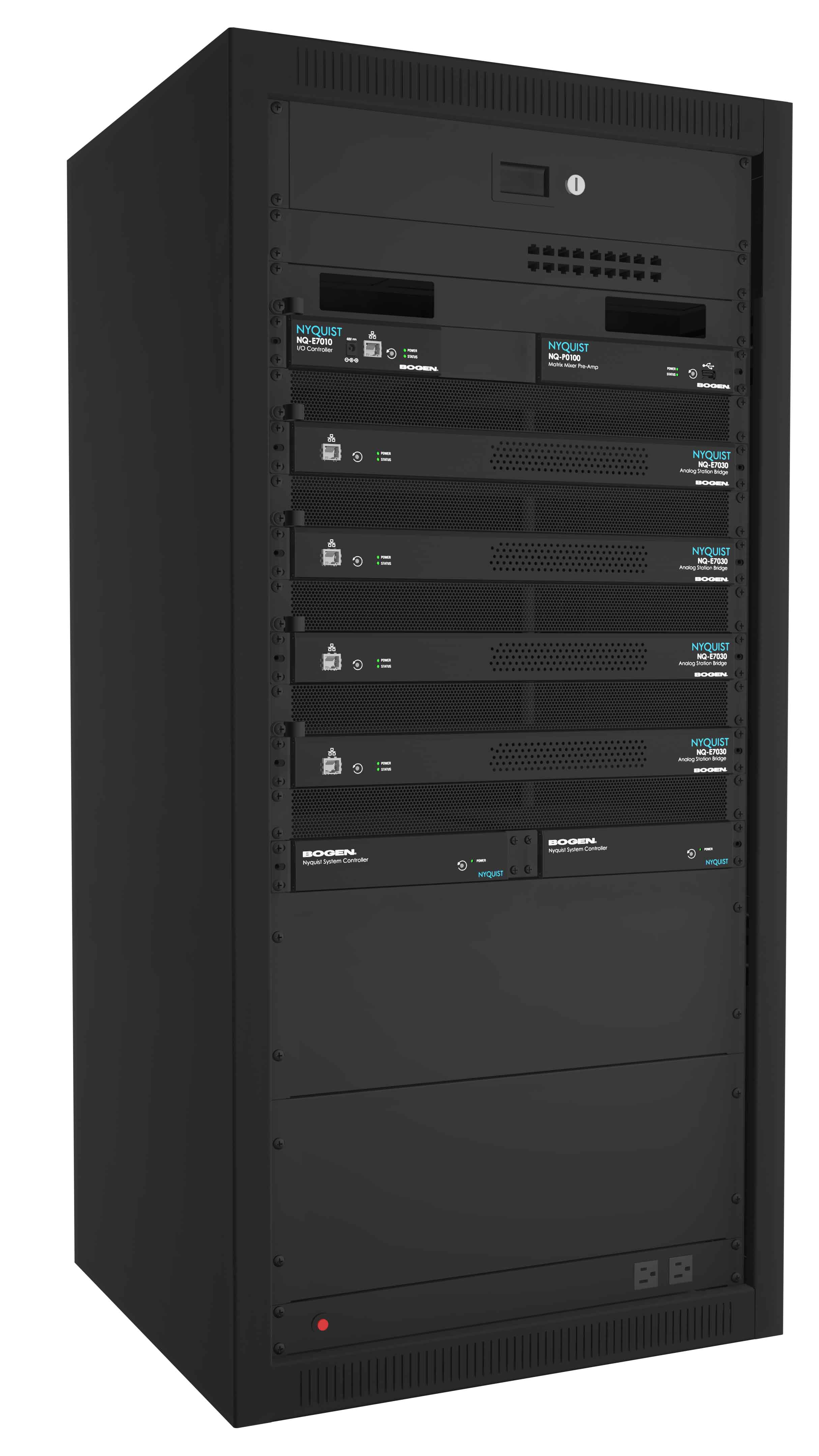
Bogen Communications Nyquist E7000
A software-based system, Bogen’s Nyquist E7000 is an IP-based paging and intercom solution designed for communications on campus as well as a district-wide basis. Its GUI provides map-based paging and intercom management, as well as station supervision with email alerts. Other features include text-to-speech functionality, which enables users to create pre-recorded, scripted announcements.
